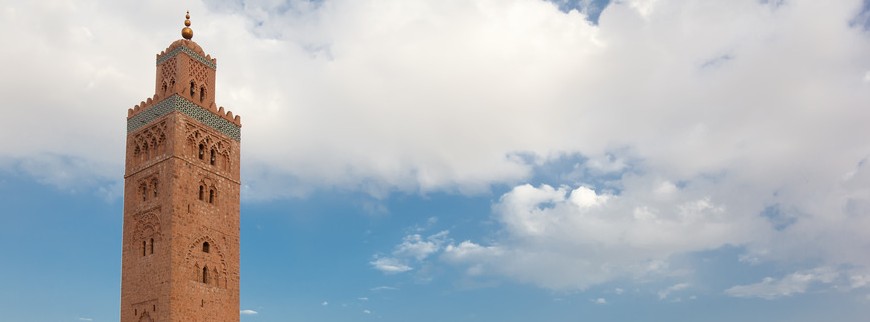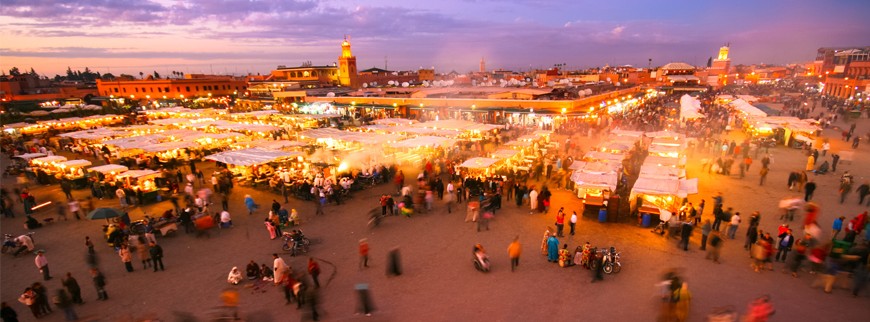Culture of Marrakech
Culture in Marrakech means merging into the medina with its narrow streets and covered markets, listening to traditional music or visiting a museum with Moroccan art.
The heart of Marrakech is Djemaa-El-Fnaa. On this huge square there is always something to do. During day time snake charmers, storytellers, acrobats and musicians entertain the audience. At night time the square transfers into a large restaurant with dozens of food stalls.
The Bahia Palace was built at the end of the 19th century and is most famous for its richly decorated interior.
In a Kasbah are the Tombs of the Saädieden. Here are four sultans and 62 relatives from the powerful dynasty of the Saädieden buried. Under the reign of Moulay Ismail was decided to eliminate the remnants of the Saädieden. Only in 1917, the tombs were rediscovered and restored beautifully.
Medersa Ben Youssef is a Koranic school which was founded in the 14th century. It is a beautiful building in which the rich Andalusian decorations are in stark contrast to the simple rooms of the former students.
The Koutoubia mosque is one of the most beautiful mosques in North Africa. The mosque was built in the 12th century. The minaret is 70 meters high and can be seen from far. Non-Muslims can not enter there, but the building is from the outside more than worthwhile.
Outside the center of Marrakech are the Menara gardens, which have a long history. Abd al-Mu'min, a leader of the Almohads, had laid out the gardens in the first half of the 12th century. Menara is actually the name of the small pavilion that was built in the 16th century.
The botanical gardens Majorelle in Guéliz was designed by the French painter Jacques Majorelle in the 20s of the last century. The garden with its bamboo, cacti, lemon trees, water lilies and palm trees is an oasis of calm in the hustle and bustle of the city. In the garden is a villa in a striking blue color. This kind of blue is called Majorelle blue. From 1980, the garden belonges to Yves Saint Laurent.
History of Marrakech
In 1070 the Almoravids founded a tent camp, which later led by Youssef Ben Tachfine, became a real city with mosques, palaces and Kasbahs. However, the Almohad tribe, a strict Muslim Berber dynasty, forged plans to expel the 'godless' of Marrakesh and to take over the town. In 1146 they carried out their crusade, chased or killed all the Almoravids and destroyed the religious buildings which, to their opinion, were not oriented towards Mecca.
The city became an important trading center for the caravan routes through the Sahara. For more than a century the Almohads ruled over Marrakech and constructed impressive buildings. In 1269 the Meridian Nomads took over the city, and under their leadership the city decayed. Only after three centuries the Saädieden conquered Marrakech and for a period of 30 years they became the rulers over Morocco. The richness of the sultans made major repairs of the city possible.









